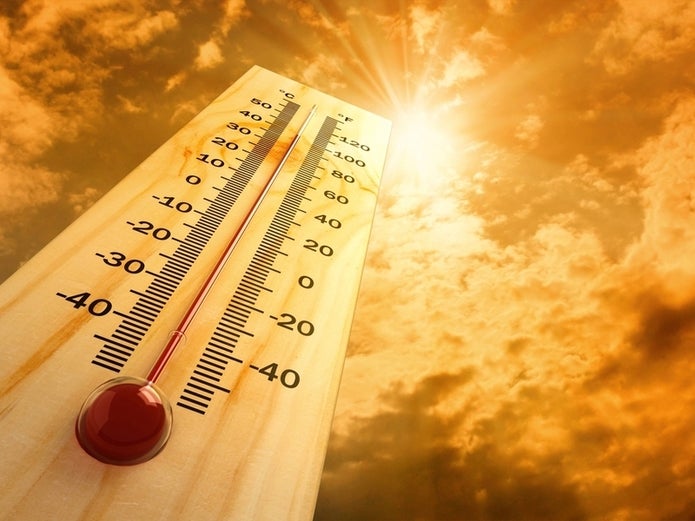
27
Apr
SPG SAFETY TOPIC- EXTREME HEAT
 We are moving toward that part of the year when it will be “hotter than a jalapenos armpit.” Those days when the humidity makes it feel like you’re “breathing through a straw” or you’re “walking through soup.” In those times, you want to stick your head in the deep freezer and crank up the AC ’til it’s blowing snowballs. Unfortunately, with our line of work, AC is not always an option. We work outside most of the time and we work in the deep south where it’s “hotter than the Georgia asphalt.” Therefore, heat can be a big problem and we must protect ourselves and our employees on our job sites.
We are moving toward that part of the year when it will be “hotter than a jalapenos armpit.” Those days when the humidity makes it feel like you’re “breathing through a straw” or you’re “walking through soup.” In those times, you want to stick your head in the deep freezer and crank up the AC ’til it’s blowing snowballs. Unfortunately, with our line of work, AC is not always an option. We work outside most of the time and we work in the deep south where it’s “hotter than the Georgia asphalt.” Therefore, heat can be a big problem and we must protect ourselves and our employees on our job sites.
There are an average of 702 work related deaths annually in the US due directly or indirectly to extreme heat. I have experienced heat related illness personally and I have seen it in others on jobs. It is a scary sight to see a person under duress, turning white, becoming clammy, becoming disoriented, vomiting, cramping, fainting, or staggering. All signs of heat stress/stroke. Now is the time to begin planning to protect our workers from heat related illnesses. Some basics that we must always follow:
1) Monitor the weather forecasts for the following day and prepare accordingly.
2) Educate our workforce about the signs and symptoms and encourage them to take care of themselves in line with the SOP.
3) Make sure we have plenty of water and that the workers drink plenty of fluids.
4) Have them avoid energy drinks.
5) Give workers breaks in a cool area, as necessary, and especially if they show any signs or symptoms.
6) Know where your workers came from and their acclimation level. If a guy leaves North Dakota in May and comes to work for us in south Georgia, he is an extreme, at risk employee. Treat that employee with the level of care necessary. It may take that person a couple of weeks to acclimate. Acclimation is one of the most critical factors.
7) Monitor the workers for signs and symptoms. Don’t be afraid to ask them how they are doing.
8) Cool them down quickly. If someone is in distress, do whatever it takes to cool them. Pour cool water on them. Apply ice packs on a towel to the back of the neck and under the arms to get their core body temp down.
Lastly, don’t assume that just because we are not in the heat of the summer, we won’t have any heat related illnesses. Actually, in my experience it’s just the opposite. We may have more or just as many heat related issues in May and early June, due to people not yet being acclimated as you would in July and August.
Thanks for all that you do for us and let me know if you have any questions.
|
Brandy Haynie, CSP, ASP, CHST
Vice President HSE
|


0 comments